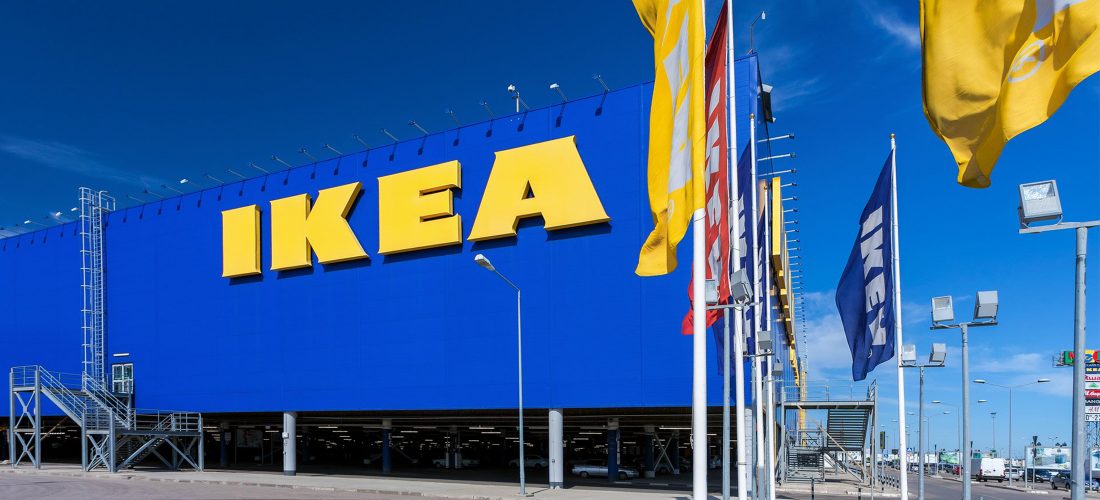
IKEA has led to the idea of ”making everyday lives better for more people” that created a paradigm shift in the minds of millions of households by providing quality products, quality at an affordable price. The largest retailer in the world exemplifies the fact that there is simply no formula for overnight success. So how does a teenager in Sweden create a superior brand? And what keeps them in the lead for such a long time?
IKEA was founded in 1943 by the 17-year-old Ingvar Kamprad in Sweden. The company’s name is derived from the acronym I.K., plus the first letters of Elmtaryd and Agunnaryd, which are the name of the farm and village in which he grew up.

The Swedish home furnishings company started selling small accessories and then quickly transitioned into the furniture sector when it saw the potential in the market. At that time, stylish interiors were only within the reach of a handful of wealthy people. Therefore, Kamprad’s vision was to bring his interior designs to everyone. In other words, he wanted to create his own affordable furniture market. Since then IKEA has grown into an industry powerhouse, with revenue reaching over $41 billion, nearly a billion store visitors annually, and a presence in more than 50 markets, making the Kamprad family among the richest people in the world.
Here are the secrets that lay the foundation of IKEA’s triumphant achievements.
Global middle-class target
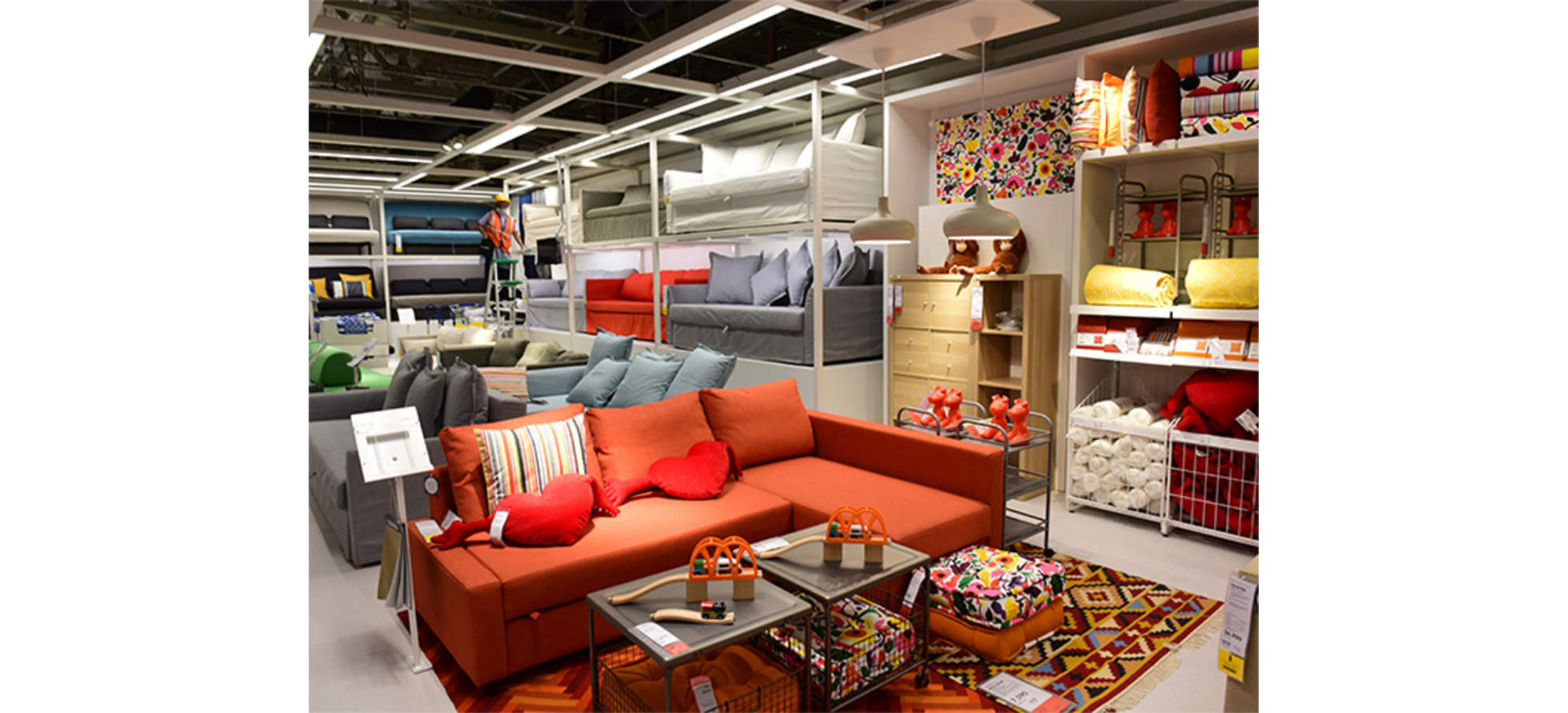
High-quality furniture is not only for the wealthy-class segment, and IKEA has known this better than any brand. The global middle-class segment of the society comprises those people who aim at maximizing their satisfaction on purchasing a product or a service, in the most economical way as possible. The gist behind IKEA’s global marketing strategy is that the middle-class is the largest segment in society.
Moreover, who doesn’t want a cheap and good quality product in today’s world? In fact, price is so important to Ikea’s strategy that the company first decides on the price of a piece of furniture and then reverse engineers the construction. IKEA highlights its international marketing tactics by putting more light on low prices offered, along with decent quality standards, which in turn enables them to fully capture the global middle-class target.
The store layout
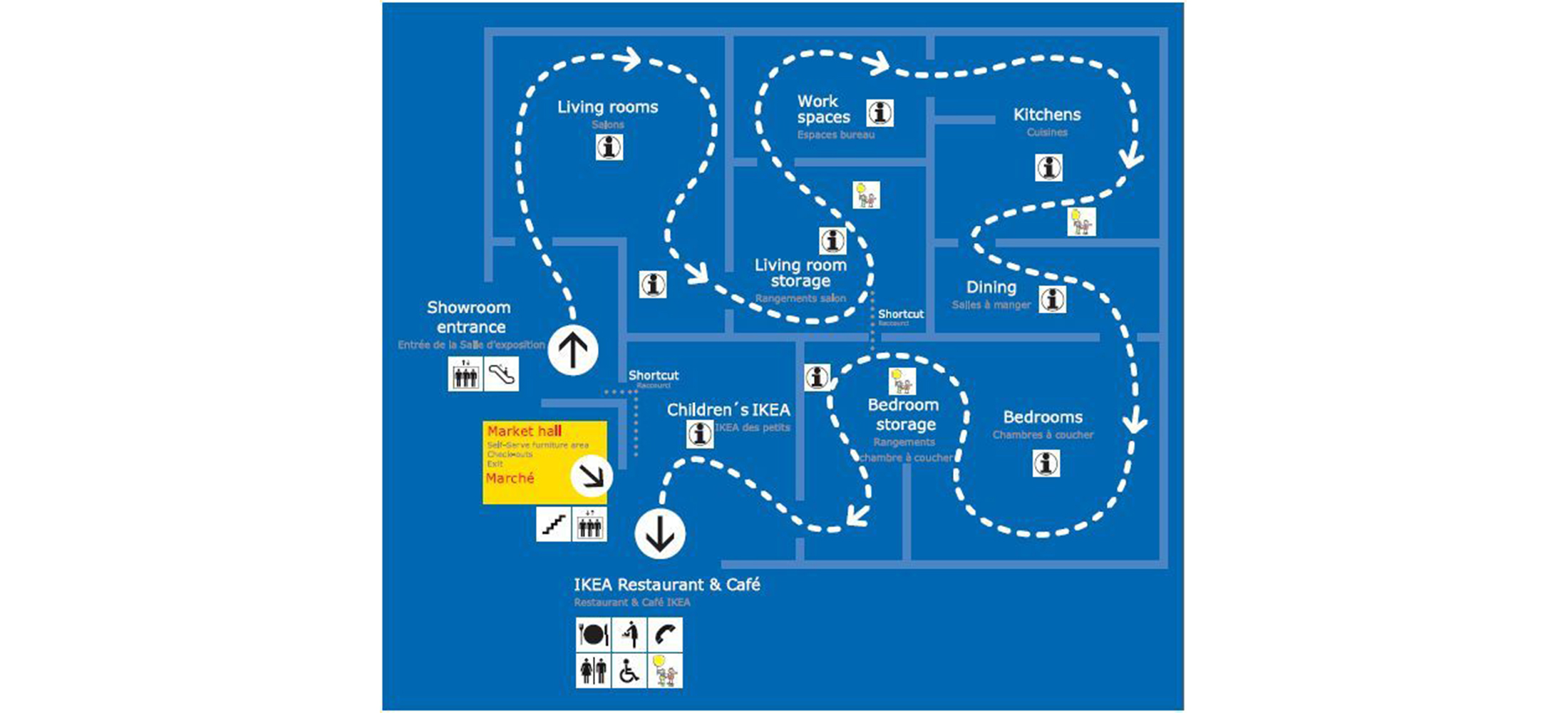
IKEA is famous for its maze-like layout. As seen in the picture above, each store has a one-way walkway designed to convince customers to see the entire store. The first half of the store has showrooms where customers can get inspired and make buying decisions. Then, in the second half, sometimes on another floor, customers can pick up items from the store’s warehouse.
As a customer, even if you know what you want, you can’t skip the showroom and go directly to the warehouse. While some people may find the experience unpleasant, in general, customers will discover new items of interest to them, resulting in buying more items than originally intended. Finally, right in front of the checkout counter, there are discounted items as a last resort. That’s why nobody’s talking about “quick see” or glance at IKEA.
More than just the store
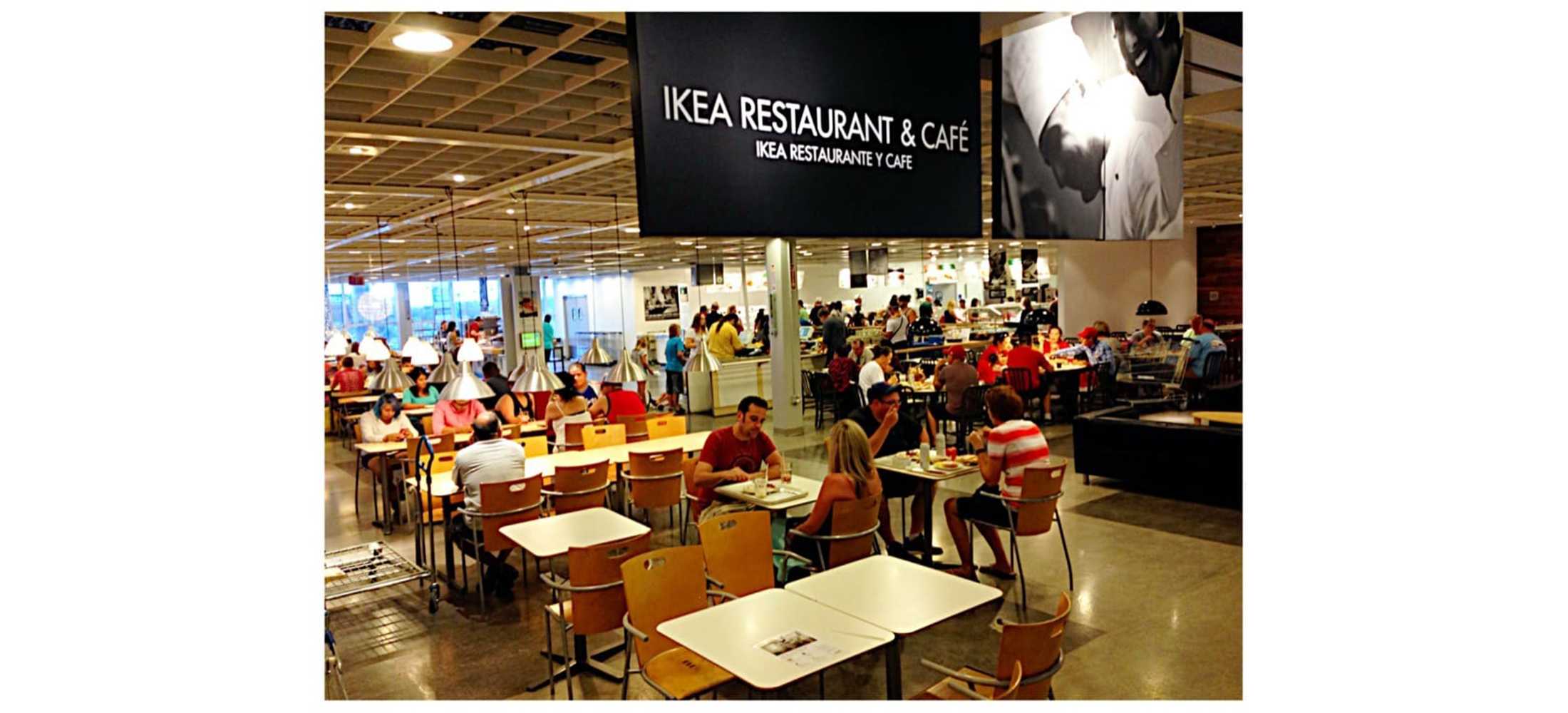
In addition to the unique layout, IKEA’s stores also serve food and have babysitting areas. Ikea’s cheap food – both in its cafe and at checkout – is as iconic as its furniture and is as well a draw for customers. Every IKEA’s store serves a variety of dishes, in which the Swedish meatball is the signature one. Globally, IKEA sells more than 1 billion Swedish meatballs each year.
The idea behind this is to reduce distractions. Hungry customers can be satisfied and adults can shop freely without being interrupted by the children. This results in customers being more comfortable and willing to shop longer.
“When you feed them, they stay longer, they can talk about buying more and make a decision without leaving the store,” said Gerd Diewald, IKEA’s food sector manager in the US. The food is cheaper than most nearby restaurants and the babysitting service is free, meaning this could be a lossy service for IKEA. However, higher purchases due to customers spending time in a stress-free environment outweigh the costs incurred.
The IKEA catalog
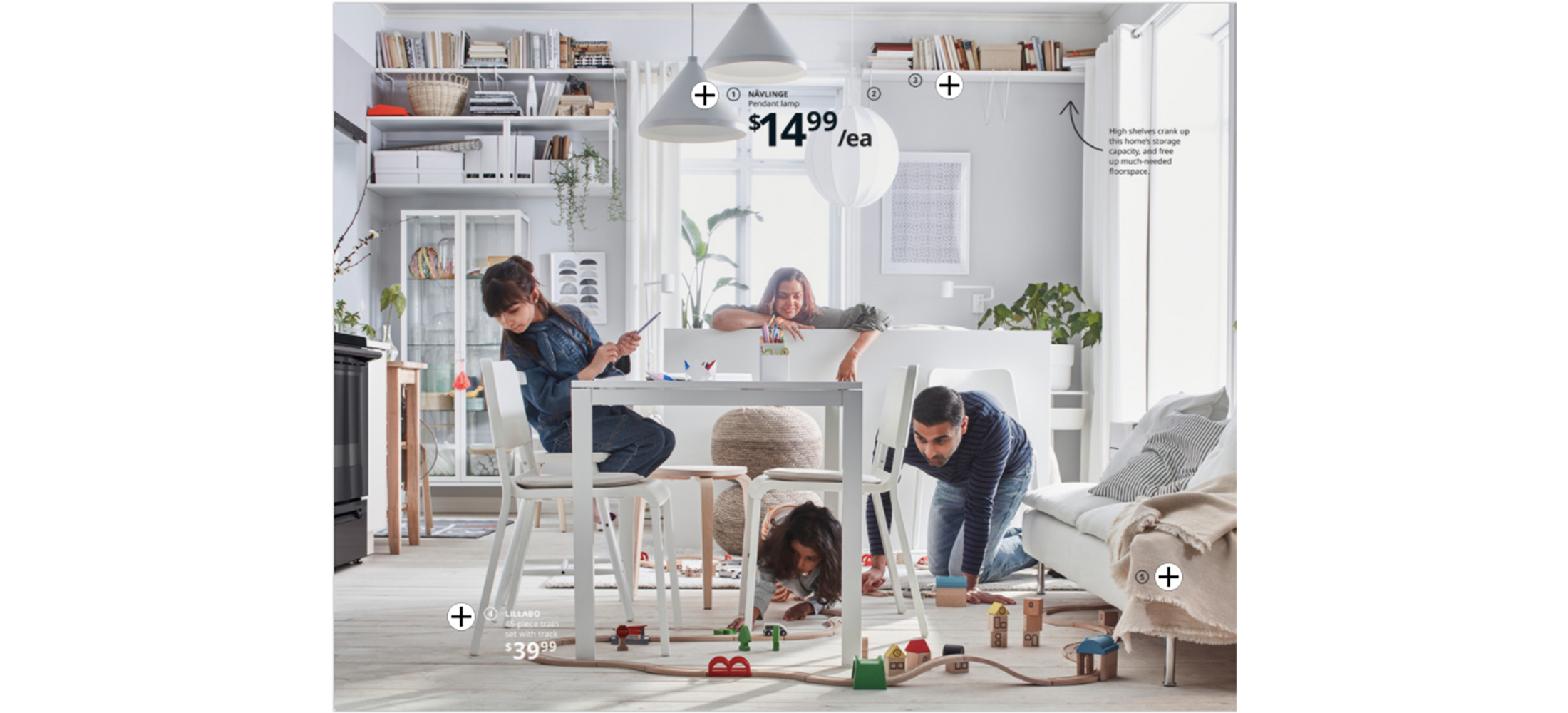
While most other furniture brands catalogs are just lists of products for sale, IKEA implements a further approach by providing design ideas and inspiration for your “perfect home”. These include consideration for color, light, and distance combinations. So instead of just telling the client, “here’s what you can buy,” it adds value by assisting with the design of a complete home.
For financial optimization, instead of having a dedicated studio employing photographers, interior designers, and engineers to create portfolios, IKEA cuts costs by using computer-generated imagery (CGI).
This practice also gives IKEA the flexibility to tailor its portfolio to specific countries. For example, some countries prefer lighter colors, while others prefer darker colors. In a studio setting, this will require a rebuild, while they can easily make changes with a computer with only a few time and resources. In return, savings in catalog design are translated into lower prices for the consumer while remaining profitable.
Bottom line
With all the massive achievements IKEA has reached, the largest home furnishing retailer has proven how implementing subtle features and unique activities to maximize shopping experience and enhance customer connection could make a spectacularly huge difference. By far, we can tell that the hidden traits of IKEA’s success above will continue to make this company prospect even further.
According to CNBC
——————–

How do you think about this article? Please share it with us via the comment section below.
PRIMUS – TOP MANAGEMENT JOBS ONLY





